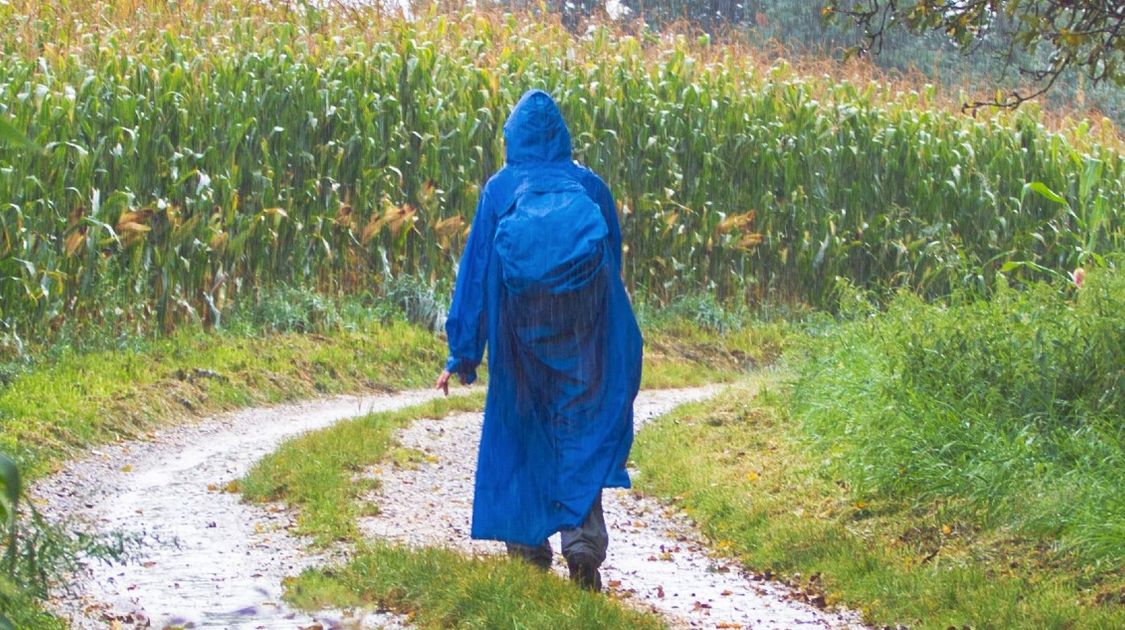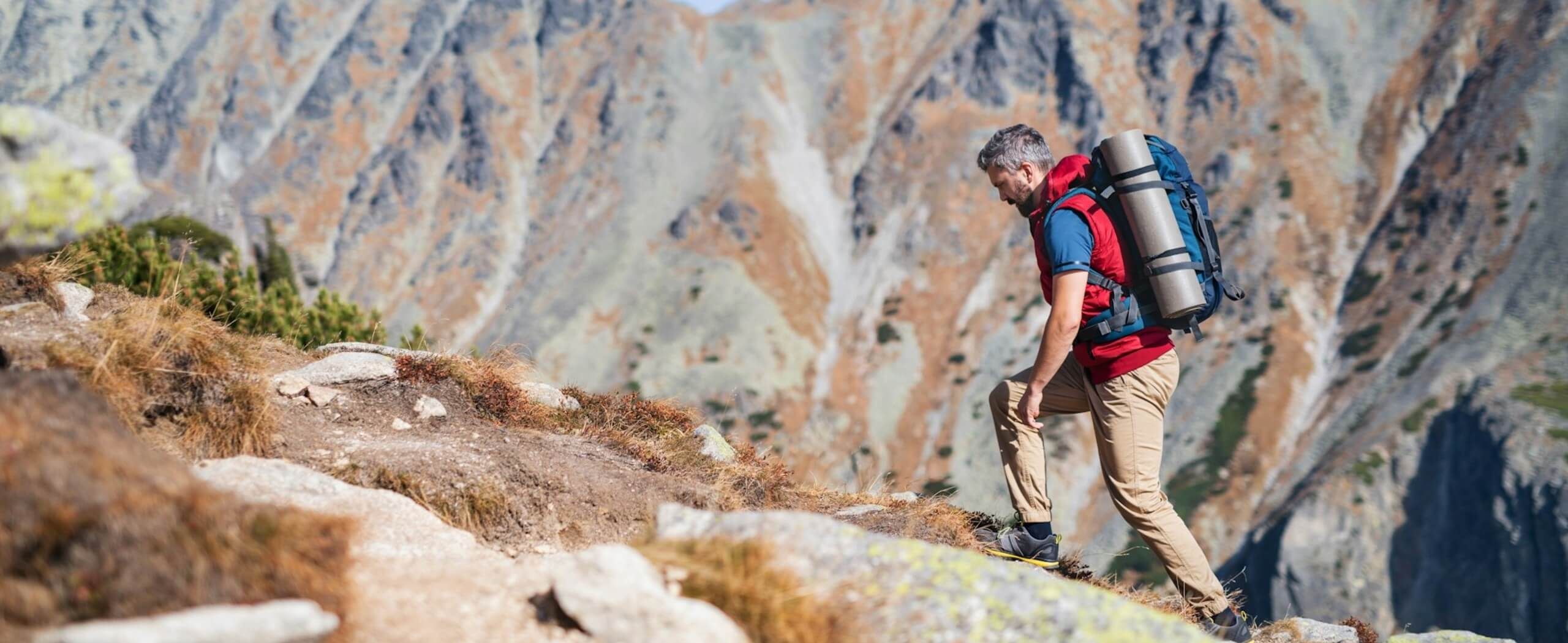

BlogAdventure HealthHow to Adventure Safely in the Age of Extreme Weather
How to Adventure Safely in the Age of Extreme Weather
Mallory Kirzinger
Jan 2, 2023
To state the obvious, most of us would rather not be hiking in a hurricane. If you’ve spent enough time in the outdoors, you’ve almost certainly found yourself caught up in less than ideal conditions. Maybe you got swamped by a surprise thunderstorm that turned your trail to mud. Or you got stuck in early season snow, trudging back to the car in sneakers and shorts. Perhaps you took a boat trip on vacation that ended up in sunburn and an all-consuming craving for Gatorade.
The inconvenience of bad weather during an outdoor adventure is a reality that most adventurers understand. The impact of extreme weather on outdoor adventure is one that too many adventures underestimate. With weather patterns becoming increasingly volatile with each passing year, understanding how to reduce your risk in the outdoors in the event of a weather catastrophe is essential. These tips and tricks might save you from soaking your boots, or they might save your life.

Mountaineering during the blizzard
The Reality of Changing Weather
The Intergovernmental Panel on Climate Change report released in 2021 confirms that the human influence on weather extremes has “strengthened,” particularly for heatwaves, heavy rainfall, droughts, and hurricanes. In addition, analysis by NOAA reveals that average global temperatures in 2020 were 1.76°F (0.98°C) warmer than the 20th-century average. The result? Scorching temperatures and drought worsen forest fires. Increased evaporation as a result of extreme heat leads to increased rainfall during storms. Warmer waters and rising sea levels drive the formation of hurricanes. Changing temperatures at the poles can cause hurricanes to stall out and cause massive flooding overland. In a nutshell, the changes we’re observing mean more heatwaves, more rain, and stronger storms.
While the current climate trends don’t paint a pretty picture, we can still predict and plan for the weather that can directly affect our outdoor adventures. Let’s take a look at the weather trends most likely to impact your adventures and what they mean for those in the outdoors. While this is by no means an exhaustive list of worsening weather patterns, these are the trends most frequently dealt with by regular adventurers.
Excessive Heat
Trekking too many miles in too many degrees? Not fun. Average temperatures are soaring all across the globe, and this means that adventurers are having to find a way to stay cool. The main threats when it comes to excessive heat are dehydration, sunburn, and heatstroke. Dried-up water sources can make finding adequate hydration on longer adventures difficult.
Heavy Rainfall
It’s raining and it’s pouring! While hotter temperatures lead to increased drought, they also increase the evaporation of water. This can lead to higher than normal levels of rainfall when the clouds come. Adventurers need to be aware of flash flooding and trail washout in addition to threats like fast-flowing rivers.
Thunderstorms
Rainfall and storms go hand-in-hand, but the incidence of hail and lightning strikes increases with the average severity of storms. Hail can be damaging to people and property. While we might pass jokes about the odds of being struck by lightning, people are killed and injured by it in the outdoors every year.

Two girls walking in the heat
Adventuring Safely in Extreme Weather
The first rule of adventuring safely in extreme weather? Try not to do it. While it can be tempting to squeeze in that long-awaited hike (or whatever your adventure is), weather changes can be rapid and intense, especially in the mountain regions we so often find ourselves in. if the forecast isn’t good, plan for another day.
That being said, sometimes the best-laid plans and sunniest skies can change without much notice. Below is a collection of tips and tricks that can help you avoid extreme weather and come out on the other side should you be caught in it.
Learn to Read the Conditions
Checking your weather app in the middle of the mountains might not always be an option, but there are plenty of clues we can read in the sky that hint at weather changes. While natural signs may not be 100% accurate or timely, they can help us stay in tune with what’s going on around us, especially since animals and plants sense changes in the weather before we do.
- Red skies in the morning indicate rain could be on the way. Weather systems commonly come from the west, and the way a low-pressure system scatters the sunlight can give a red hue. The flipside? Red skies at night mean tomorrow should be fair.
- Tall, fluffy clouds with dark, sheared-off bases mean a storm could be forming.
- Some leaves on trees (particularly maples and poplars) flip upside down when rain is coming. They do this in reaction to a sudden spike in humidity.
- Birds flying low may indicate a low-pressure system on the way. Birds flying high means the weather is more likely to stay stable.
- Pay attention to the direction of the wind. East and northeast winds are usually the counterclockwise currents of low-pressure systems, meaning a storm may be on the way, Sudden, strong changes in wind direction could mean the weather’s about to turn.
- Listen to your internal barometer. Does the air around you feel heavy, unsettled, and dense? There could be a low-pressure system at play.
Pack and Prepare Above and Beyond
We know it’s tempting to shave off every possible ounce from that monstrous backpack, but when you’re potentially in the path of extreme weather, it’s worth allocating some room for potentially lifesaving equipment. You don’t want to head out in a heatwave with a measly litre of water or get caught in a flash flood with no cell service. Start with an emergency blanket or bivy, first aid kit, more water and food than you may need, extra insulation layers, and wicking clothing. Then, tailor your pack list based on which weather threats are most relevant in your location. For example, hikers in hot regions should save some room for sunscreen, a wide-brimmed hat, and extra water stores.

Couple hiking in the mountains during the heavy rain
Invest in the Right Places
Between gear, guides, and travel, getting outdoors is notoriously expensive. Safety shouldn’t be the area you pinch your pennies in, though! Below are some of the things worth investing in when you’re out and about in an area prone to extreme weather.
- Communication. What happens when you’re caught in a flash flood and you’ve got no bars? A satellite phone is a worthwhile investment for anyone venturing away from the beaten path, especially those planning longer backpacking trips where the nearest cell tower is too far away to offer you any help.
- Guides and reputable tours. Having the knowledge of a skilled local at your fingertips can help you navigate out of situations you might be a novice in yourself. Whether it’s hiring a guide for a big mountain ascent or booking a guided tour in a new location, professional savvy when it comes to the landscape and the weather patterns can keep you safe.
- Specialty safety training. While certain conditions might be a surprise, how to deal with them doesn’t have to be. Investing in specialty training like avalanche safety, kayak self-rescue, crevasse rescue, emergency survival, or first-aid training prepares you to handle extreme situations, many of which can be caused or exacerbated by extreme weather.
- Insurance. When you’re booking a trip or planning an adventure, invest in insurance. Nobody ever wants to be airlifted out of the middle of the mountains, but should it happen, you want to be covered. Beyond emergency situations, having insurance can mitigate the temptation to press on with your plans despite extreme weather events. Trip cancellation or change insurance means you can raincheck and wait for sunny skies.
While we certainly can’t control the weather, we can control how we prepare for it and respond to it. Keeping safety in the age of extreme weather in mind can ensure your future adventures adapt to the environment and allow you to keep getting out there for years to come.
Health and Fitness Articles
Are you looking to improve your overall health and fitness while also spending time enjoying the beauty of the outdoors? Whether you are a beginner hiker or a seasoned outdoor enthusiast, there is no time like the present to get out on the trails and live a healthier lifestyle. To help you turn those New Years resolutions into a healthy habit you will stick to, we've written some articles that will help you achieve your goals for the upcoming year!
Guides for Beginners
- Hiking First Aid Kit: Stay Safe in the Backcountry!
- How to Prevent and Treat Muscle Soreness and Blisters
- Backpacking Hydration Tips
Training for the Outdoors
- Training from Home for the Future Hike
- Training for your First Backpacking Trip
- Couch to Mountain Top: Expert's Training Guide for Hikers
Health Articles
Recent stories

Destinations
5 Hidden Alpine Villages You Can Reach on Foot
There’s something magical about arriving in a village on foot.
Alex Todd
Sep 12, 2025

Destinations
10 Things to Know Before Hiking the Camino de Santiago After 50
There are few journeys in the world as life-changing as walking the Camino de Santiago.
Alex Todd
Sep 10, 2025

Travel tips
What to Wear on a Walking Holiday (Practical & Stylish)
Walking holidays are about more than just covering miles.
Alex Todd
Sep 8, 2025